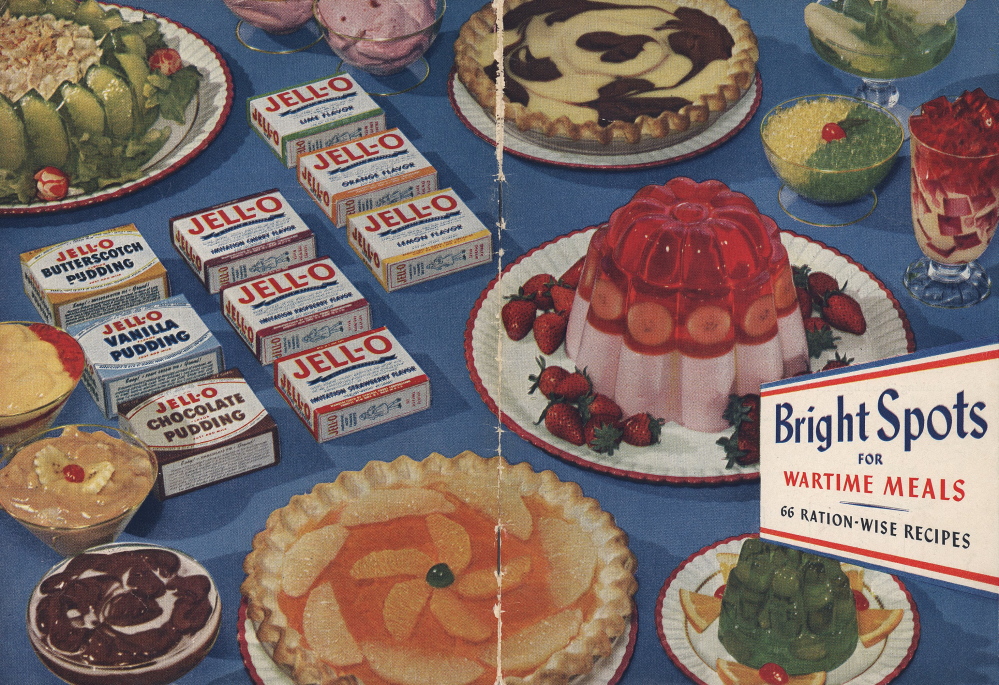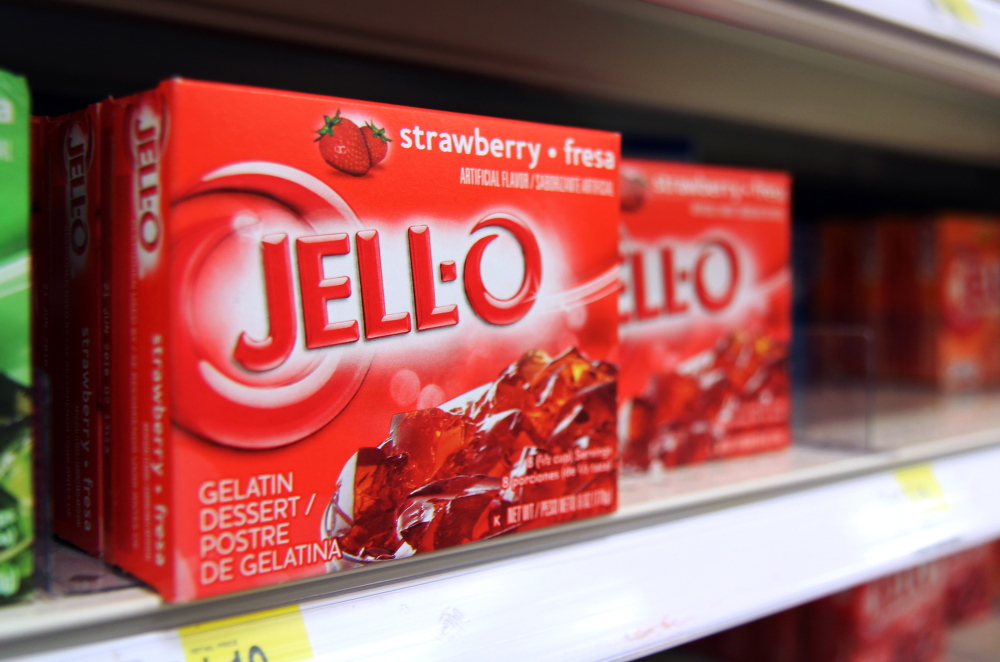NEW YORK — Jell-O has lost its jiggle and nobody knows how to fix it.
The dessert was invented more than a century ago and helped popularize a delicacy reserved for the rich into a quick, affordable treat. Americans of all ages are familiar with the famous “J-E-L-L-O” jingle and TV ads featuring comedian Bill Cosby. Knocking back Jell-O shots made with alcohol is a college memory for many.
Yet despite its enduring place in pop culture, sales have tumbled 19 percent in the past four years, with alternatives such as Greek yogurt surging in popularity. Executives at Kraft Foods, which owns Jell-O, say they’re confident they can revitalize the brand. But their efforts so far have been a disappointment.
After years of marketing sugar-free Jell-O to dieters, for instance, Kraft last year launched an ad campaign that switched back to playing up the family angle. In one TV spot called “Comb Over,” a man with the title hairdo tells his son how Jell-O makes up for life’s troubles, like being stuck in traffic. The visual gag is when the child imagines himself going through life with a comb over.
“Kids thought it was hilarious,” said Dan O’Leary, senior director of marketing for Kraft desserts.
Unfortunately, it didn’t get people in the mood to eat Jell-O. After showing signs of improvement for a couple years, Jell-O sales in the U.S. hit $932.5 million in 2009, reflecting box mixes and ready-to-eat cups of gelatins and puddings, according to market researcher Euromonitor International. But they’ve been declining ever since, and by last year, sales had seen a double-digit percentage drop to $753.8 million.
Part of the problem is that people have become more finicky about what they eat.
They’re increasingly seeking out foods they think are natural or wholesome, and Jell-O’s bright reds, greens and blues may inadvertently serve as warning signals to moms about the artificial dyes they contain.
The second ingredient listed for the Jell-O gelatin cups is also high-fructose corn syrup, a cheaper sugar substitute that more people are shunning.
Nutrition more broadly is another issue. Jell-O has long positioned itself as a lighter alternative to cakes and pies (as the slogan goes, “There’s always room for Jell-O”). But the trend now is toward foods that claim some sort of benefit, such as protein and fiber.
Even for those who have fond memories of eating Jell-O, the problem is just that – it’s a treat associated with the past.
“It almost seems childish to cook it now,” said Ted McGrath, a 34-year-old painter in New York City who thinks of Jell-O as being in the same category as Twinkies or fast food.
Kraft CEO Tony Vernon concedes Jell-O wasn’t “getting the attention it deserved” as a storied brand. That’s because the company for many years was preoccupied by more popular snacks, such as Oreo and Chips Ahoy cookies.
But in late 2012, Kraft split into two companies and the newly formed Mondelez International walked away with those higher-profile snacks.
Since the separation, Kraft has vowed to boost the performance of neglected brands like Jell-O. None of the efforts so far have worked, but executives remain optimistic.
In a rapidly changing food culture, they see new opportunities. Those in their 20s and 30s, for instance, love expressing their creativity through cooking, yet also want the convenience of packaged foods, O’Leary notes.
So Kraft says it’s encouraging people to get creative with Jell-O on social media sites such as Pinterest, Facebook and Instagram. By posting images of Jell-O creations, the company says others get inspired to share their own, such as an image of a red, white and blue Jell-O ring one follower posted on Facebook posted on July 4.
It’s also pushing new Jell-O molds, such as a line of university molds that allow people to make Jell-O in the shape of their school mascots.
In a way, the strategy traces back to Jell-O’s roots in the early 1900s, when salesmen distributed free Jell-O recipe books in an effort to boost sales. The idea was to let everyday people make fancy Victorian desserts, such as the “Roman Sponge” a concoction made with maraschino cherries, whipped cream and walnuts.
Such dishes had been out of reach for many because they could be time consuming and require unappetizing ingredients like fish bladders, said Lynne Belluscio, director of the LeRoy Historical Society in Le Roy, New York, where Jell-O was invented.
“Jellies were extremely elitist,” Belluscio said. “In Europe, the economics of a family or its social standing could be judged on its pudding or jelly mold.”
But Jell-O helped make those dishes accessible for everyone, she said.
Today, there’s a proliferation of sweets and snacks touting more pristine ingredients, such as Fage Greek yogurt and Kozy Shack puddings. But Jell-O can cling to one advantage: the nostalgia it evokes.
That’s on display at the Jell-O Gallery in Le Roy, New York. The museum – essentially a room in the town’s historical society – still gets between 10,000 to 13,000 visitors a year, according to Belluscio.
Admittedly, many of those visitors decide to pull over on a whim after spotting the sign on the New York State Thruway for the gallery. When a storm knocked down the sign one year, Belluscio said visits dropped dramatically.
Still, the Jell-O Gallery remains by far the star attraction in the building, beating out the transportation exhibit in the basement and the genealogy and history library on the main floor. And once people step inside, the memories come tumbling forth.
“It’s really funny how many people come here and say, ‘Oh man, I haven’t had Jell-O in so long’,” said Belluscio.
Send questions/comments to the editors.




Comments are no longer available on this story